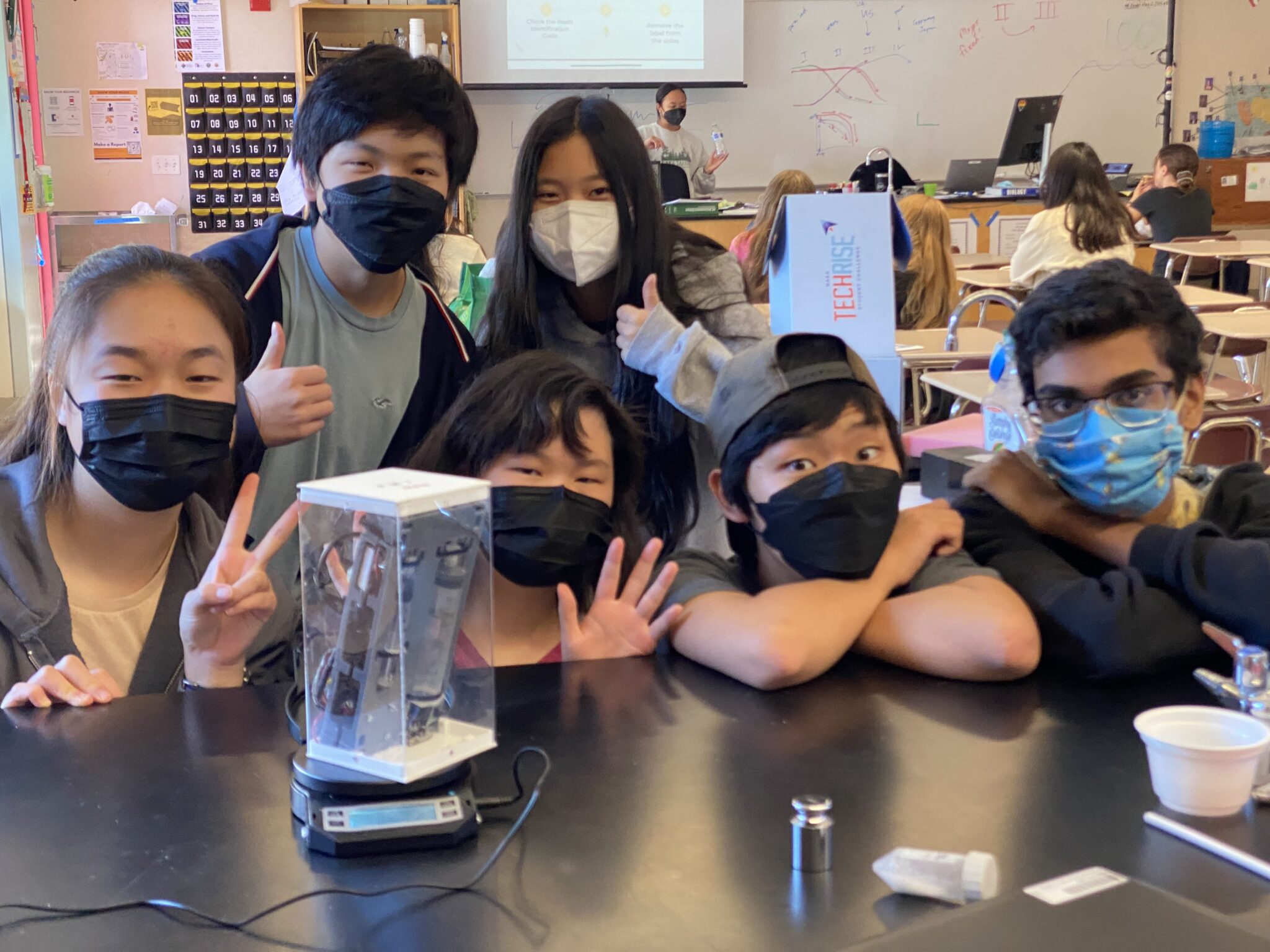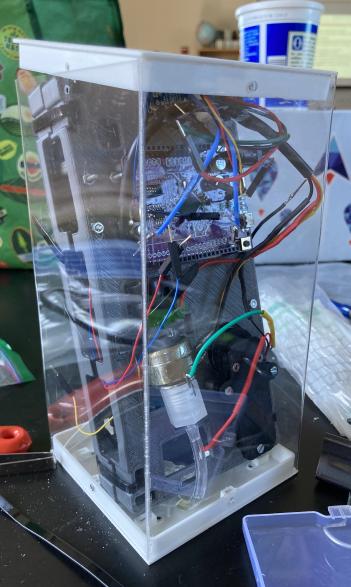
In January 2022, a team of six Aragon students won a spot in the NASA TechRise challenge. The team includes juniors Alex Ding, Nicole Jin, Rachel Ma, Jake Sakamoto and Jorell Sakamoto and senior Harish Selvakumar. In the challenge, students from grades six to 12 create projects to be launched sub-orbitally on a rocket, meaning it will briefly go into space before coming back down without entering orbit. During this time, projects are exposed to about three minutes of microgravity, a state of nearly no gravity.
The challenge involves two phases: a proposal phase and a design phase. During the proposal phase, students brainstormed and prototyped a design according to several criteria, including originality, quality, impact and feasibility.
“We came up with ideas … but there are also restrictions,” Ma said. “So we’re like ‘what can we choose that hasn’t really been done before, that is feasible and within the constraints?’ [We] ended up narrowing it down to chemical reactions … [and] started looking more into what we can test because obviously chemicals are dangerous to a rocket with a bunch of explosives.”
Almost six hundred teams made proposals, but only 57 teams won the challenge, and 24 of those teams earned a spot on the flight of a Blue Origin rocket. Accepted teams moved onto the design phase and used the $1,500 grant to turn their proposal into a reality.
The Aragon team’s project involves a chemical reaction between potassium iodide and hydrogen peroxide that produces hydrogen and oxygen gas. The amount of gas emitted is measured with a camera and pressure sensor in order to test how reactions in microgravity differ from those on Earth.
So we’re like “what can we choose that hasn’t really been done before, that is feasible and within the constraints?”
Jorell Sakamoto discovered the competition and reached out to Aragon STEM clubs.
“When I first saw the challenge, I thought it was extremely cool [and] a great collaboration with other clubs that were also doing STEM,” Jorell Sakamoto said. “It’s a great opportunity to gain knowledge in STEM.”
Selvakumar was interested in joining because of his love for aerospace and challenges.
“Getting the opportunity to send something in space was definitely a huge inspiration, [as was] the challenge of getting to do something as intensive and difficult as this,” Selvakumar said.
Students receive a four-by-four-by-eight flight box for their experiment and a five hundred gram, or 1.1 pound, weight limit.
“It’s always a constant goal of finding creative solutions to very simple things,” Jorell Sakamoto said. “So everything that we design or try to buy we always have to think about how much weight [and space] it will ultimately take.”
Getting the opportunity to send something in space was definitely a huge inspiration
In addition to these constraints, several obstacles arose as the team went through the design process, one of which involved an issue with hydrogen peroxide corroding metal.
“Our solution was to not have the hydrogen peroxide touch the metal parts until the actual experiment,” Ma said. “During the experiment, it won’t corrode [metal] too badly and we’ll be able to run the experiment, but during storage, we can’t have [them] touch.”
Ding explained her favorite part of the challenge.
“Personally, I like building stuff and seeing it come together,” Ding said. “A few days ago, … we put everything together [and] did the first really successful test … and that was pretty fun for me.”
Overall, the team is proud of their progress.
“We want everything to go as expected, but at the same time, if it doesn’t, I think I’d still be proud of what we’ve done,” Selvakumar said. “Because even if it doesn’t pan out as expected, it’s still something [worthwhile].”
The team’s project will be launched on a Blue Origin rocket in late spring of 2023.






